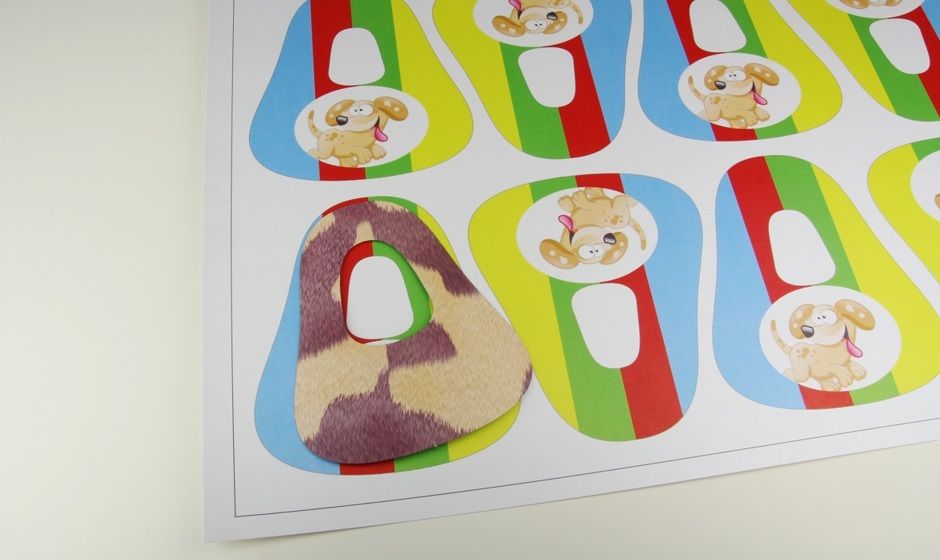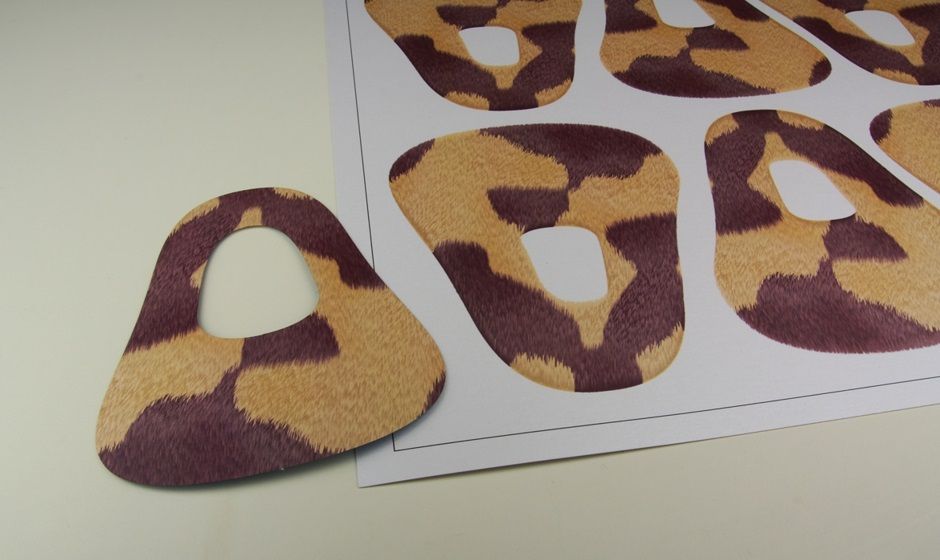Paper cutting - combination of printing and laser cutting
At Lasercut4 we cut a wide variety of papers, some printed papers and some papers in special finishes with varying texture. We use a Xerox digital printing machine which can print up to A3+ paper size (dimensions 488 mm by 330 mm) and the ability to print on a page up to 300 gram thickness.
In many cases it is necessary to perform cutting of a printed paper, a process consisting of two stages: first digital printing on the paper and then cutting the paper with laser machine. The printed paper is placed manually on the cutting table of the laser machine, so there may be a deviation of up to 1 mm between the pattern and the lines to be cut. Many other factors influence the deviation, and It is still not possible to completely avoid a certain deviation.
The recommended way to overcome this deviation problem is to plan the drawing graphics, both the print and the cut, to minimize it in the final result. A deviation of 1 mm will not be distinguished in some cases, for example we will not design a line that will pass exactly along printed line or on a boundary between different colors in the print, were in these cases Even a deviation of 0.1 mm will be distinct for naked eye.

Laser cutting of printed paper according to a drawing file - (design: DO STUDIO)
The following are some examples of products that combine laser printing and cutting:
- Special business cards
- Designed greeting cards
- Wedding Invitations
- Invitations to a 'brit mila'
- Invitations to special events
- Wedding addresses
- Paper packaging for folding
- Paper coasters with a lace texture
- Thank you cards
- Custom designed paperwork
In some of these paper products, the print is two-sided. There are several factors that determine the quality of the printed product: the type of paper, the quality of the print, the design of the product and the type of printed artwork. When laser cutting is also incorporated, additional parameters are added that also affect the quality: the amount of details to be cut and the ability to be precise in relation to the original design, the quality of the cut (minimum soot in the cut areas) and the accuracy in relation to the print.
Preparation of a printed-cut product begins by selecting the appropriate paper, printing the graphic, positioning the printed paper on the laser working bed and cutting it according to the cutting file. The cutting file is adjusted to the print file and defines the graphics to be cut.

laser cutting of Double-sided prntoing paper - (design: DO STUDIO)
important points for a correct cutting file:
When we come to cut printed paper we will make sure to:
- Prepare a printable PDF file and a matching cutting file. It is recommended to work in separate layers, so you can see how the cut fits into the printed area.
- Add bleed margins wherever you can leave.
- Use crop marks to allow precise positioning of the printed paper on the laser working bed.
- Correct spacing between cutting lines - to avoid too close cutting lines, which can result in unwanted paper tearing and / or soot due to heat concentration. We recommend a gap of at least 1 mm between close lines.
- The consistency of the position of the print in relation to the margins of the page - enables systematic and rapid work by preparing a template to position the page on the laser machine at the same place.
- Planning "micro-joints" in the cutting lines - with a large number of units in a single paper it is important to use micro-joints to enable the removal of an entire print paper from the laser working bed, rather than a large number of units. This method significantly shortens the work time on the machine. The separation of the cut off units can be carried out later, either by us or by the customer.
For advanced instructions for making laser cutting files, click here.
Folding lines and perforation:
Folding lines are used to fold the paper to the desired level. We will use folding lines for packaging layouts, for making envelopes and for orders where we want a double-page structure.
Because a fold line can be created by reducing the laser intensity, the cropping line must be defined in a different color than the color used for the cutting lines. We adjust the laser power so that it will not cut the paper fully, but only mark it and etch it to allow for accurate folding along this line.
Perforation of the paper possible according to a dotted line that is defined in the cutting file, and a it weakens the paper to a certain extent that enables it to be fold along the perforation line, sometimes using a perforation line to weaken the paper and allow it to be cut along the line (similar to vouchers where part of the breaker is returned to the customer).
Additional options:
Lamination is a paper finish process in which the printed paper is coated with a thin layer of polymer. The layer protects the paper from damage such as dripping water, abrasion of moisture and more. Laminating is a transparent cover that comes in a glossy or matte finish and can be applied to one or both sides of the page.
Laser cutting of coated paper is possible but it should be taken into account that the cutting of laminated paper will be less clean than the cutting of the paper that has not been coated.
